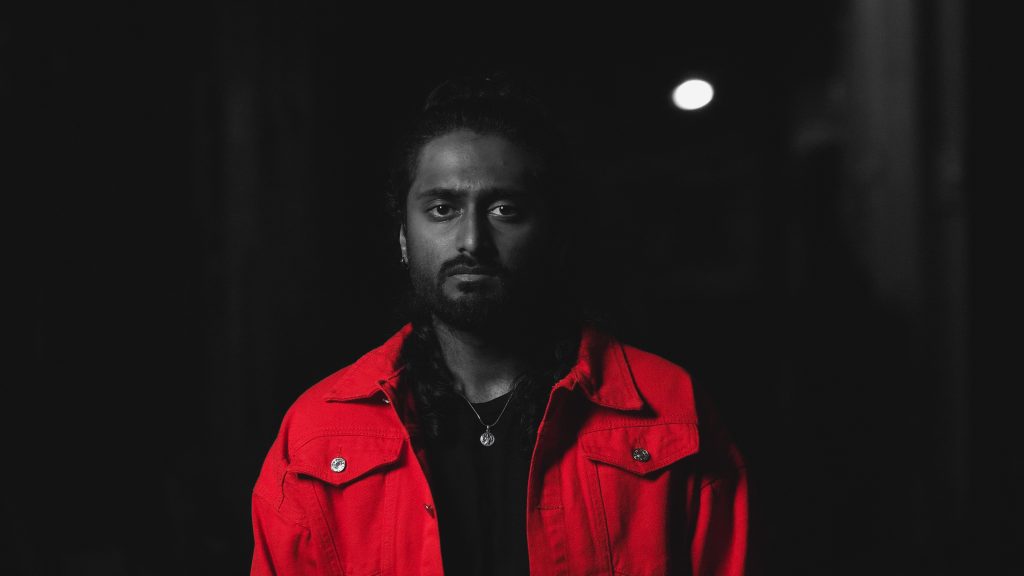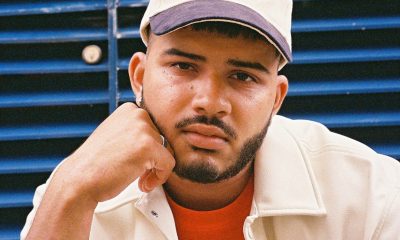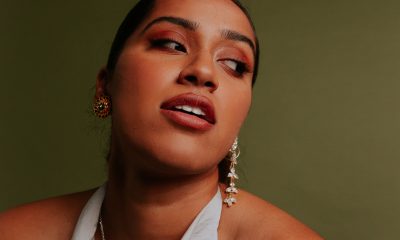Music
How Indian-Australian Alt-R&B Artist Kayar’s ‘Party Away the Pain’ Reawakens Classic 90s Kollywood
In conversation with South Asian Australian alt-R&B artist Kayar.

The nineties were sublime, eh? (Even if representation wasn’t really a thing.) We had Tamagotchis and Gameboys and Sunnyboys and Fruit Roll-Ups. We had Friends and Hey Arnold! and Rugrats.
And before we could binge-watch three seasons of Indian Matchmaking while our samosas browned in the air fryer, we’d gorge on VHS tapes and bootleg DVDs of Jeans, Kuch Kuch Hota Hai, and Padayappa.
The tapes would smell like the spices isle at MKS—a nostril-tingling concoction of cardamon, red chillies, and mustard seeds—and the films would be shaky recordings on handheld camcorders, Aishwarya Rai’s dancing in Enakke Enakkaa disrupted by random shadows taking wee breaks.
What the falooda is up with all this 90s chit-chat?
It’s because Brown Boy Magazine’s latest feature, Sydney/Eora-based alt-R&B artist Kayar, loves the 90s, too—so much so that his seven-part visual EP, A Means to Amends, is a nostalgia-laced love letter to classic 90s Kollywood and Bollywood.
Kayar’s latest record Party Away the Pain (PATP)—a bouncy electropop bop he dubs an “undeniable pick-me-up”—samples the 1990s Tamil song Oh Sona from the 1999 film Vaalee. The South Asian Australian musician strikes a delicate balance between embracing his cultural roots and the influences of his Western upbringing, and PATP showcases his knack for harmonising disparate elements into a cohesive, infectious soundscape.
In our conversation, Kayar discusses the complexities of maintaining authenticity in his artistic journey, embracing his heritage, and lots more. And if Party Away the Pain is any indication, we can only expect even more genre-defying, nostalgia-inducing records.
Our conversation has been edited for clarity and concision. Oh, and trust us—PATP is best enjoyed with an Elephant House Cream Soda.
Brown Boy Magazine: Who is Kayar? Can you tell us about your journey pursuing music? Did you grow up performing, or did you find music later in your life?
Music was always in my life. My parents always played Tamil songs, so that’s the stuff I grew up on. A.R. Rahman and Harris Jayaraj were the producers I gravitated towards the most, but I hated singing. I was forced into it by my parents. They put me through Carnatic classes for a while, but I just couldn’t bring myself to enjoy it. Piano lessons, too. They’d also make me sing at Indian functions, but I stopped in high school because I got into Western music and wanted to fit in.
It feels weird to say I’m ten years into releasing my music. About four years in, I released Long Way Home. People wanted me to continue making more music like Long Way Home, but artists are always wanting to move on to new things and grow.
When the pandemic hit, I released a new song every ten days. I did this for a year and a half and released about 60 songs. I’m pretty proud of it—it gave my catalogue substance, and I wrote some of my most streamed songs (like Butterflies, Super Glue, and Things I Never Said) during this period. My fan base grew, but not nearly as much as I’d hoped, so I stopped and took a hiatus from music. But we back.
BB: You describe your new single, Party Away the Pain, as the ‘second act in a seven-part visual EP‘. Can you tell us about the inspiration behind Party Away the Pain, and your EP, A Means to Amends? What are you hoping your listeners will take from it?
KR: This whole project is inspired by Indian films—from the sonics to the visuals. It tells a story through seven songs, each sampling songs from my childhood and accompanied by a video. It’s a visual EP because the videos are just as crucial to the story as the sonics are.
I always had the idea to create a project that took inspiration from The Weeknd’s first mixtape House of Balloons, and infused it with the songs I grew up with. I was saving the concepts for when I had “made it”.
But after having released 60 songs, I was hit with the sobering realisation of being unable to control anything in your journey no matter how hard you try.
So I figured I’d just make this project now. I made these songs to make amends for my past. I rejected who I was for the longest time and consequently did things I was ashamed of in my personal life. That’s how I landed on the title A Means to Amends.
BB: Party Away the Pain samples the Tamil love song Oh Sona from 1999 hit film Vaalee starring Kollywood giant Ajith Kumar. (I know because my Amma has a massive crush on him.) How has your heritage influenced your sound?
KR: I’m Kannadiga-Tamilian. But, my parents only ever played Tamil songs, and we watched Tamil films growing up, so I feel a little closer to the Tamil culture because of it. But Kannada is still the mother tongue.
My heritage has influenced my sound immensely because I believe South Indian music is very experimental. Where else do you get 6-7 min songs with interludes just as long and memorable as the verse?
If anyone listens to my catalogue, they’ll probably get a bit of that experimental sense. But they’ll also hear the growth and changes in my sound due to me being that way. When something like Long Way Home works, you’d expect me to go back to the studio and make more of those. But I couldn’t. I just want to do whatever I feel like and not worry about what people expect from me. That’s probably the Harris Jayaraj (or Kayaraj?) in me.
BB: You’ve amassed millions of streams on Spotify—can you tell us about how you built your audience and your road to success? What advice would you give to other South Asian Australians who aspire to make music and do the same?
KR: My audience really grew once I started promoting my songs outside of Australia and posting on socials. I’m more active on TikTok nowadays because it’s geared to help your audience find you.
If you aspire to make your own music, I would avoid doing covers as much as possible. I feel pretty strongly about this only because I aspired to write my own songs like my favourite artists, but I used to do a lot of cover gigs that I didn’t enjoy. If you’re okay with having other people write songs for you, then by all means, go down that path. But if you’re like me, learn to write your own songs early on in your journey to build an audience that listens to you for your songs.
Doing it the other way around is still a popular option. Still, when it comes time to pivot and start releasing your own music to the audience you’ve built, you won’t be where you need to be because you haven’t put the hours in to learn songwriting and, more importantly—how to write a song with your own flair.
BB: What’s the story behind the red jacket that we keep seeing on your socials?
KR: So my creative director (Mr Villiams) and I wanted to create a character for the EP and have a memorable outfit—so I’m glad you’ve noticed. Like other great artists that always tie an image to an era in their career, I wanted to do the same. I also wanted the character to feel like a South Indian film hero. And I think we actually got the idea for the red jacket/blue jeans/white shoes from a fit that Vijay wore back in the day.
BB: What’s the most unexpected track on your playlist right now?
KR: All of Frederic Chopin’s Nocturnes. Nobody created melodies like him.
BB: If you could listen to one album for the rest of your life, what would it be and why?
KR: John Mayer’s Where The Light Is. It’s the album that got me playing the guitar and has songs to get you through all the peaks and troughs of life.
Brown Boy Magazine (@brownboyau) celebrates worship-worthy tastemakers and changemakers in the South Asian Australian diaspora (without taking itself too seriously).







